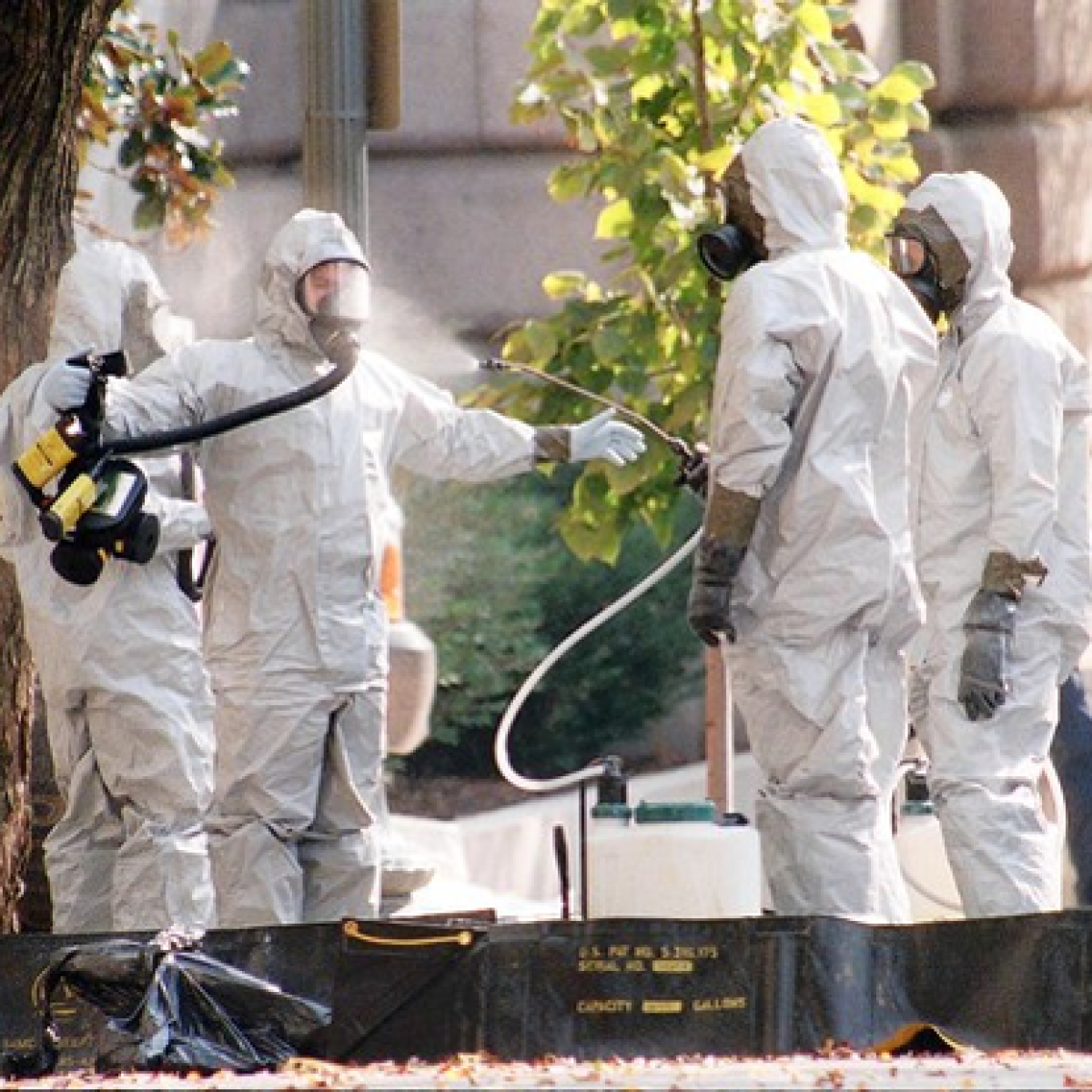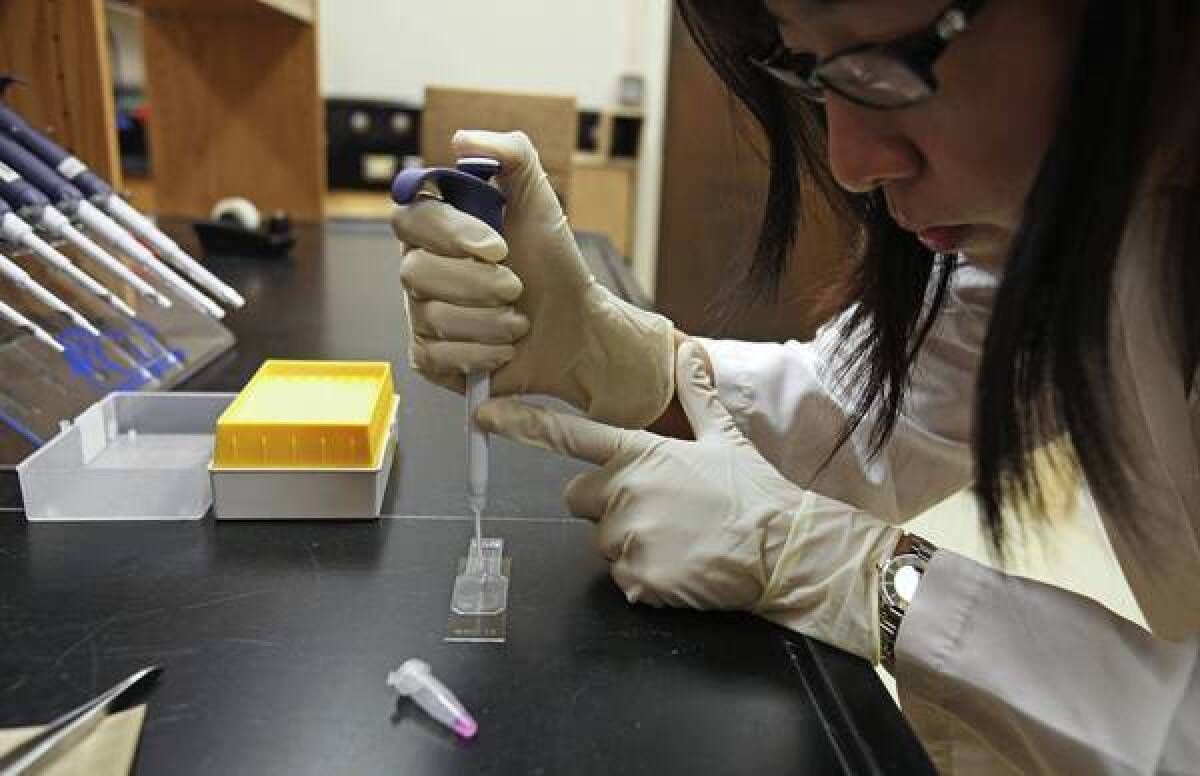Claim that cult was close to making deadly anthrax is challenged
Richard J. Danzig, who urged the U.S. to stockpile an anthrax remedy while he had a stake in a drug’s success, says the Japanese cult Aum Shinrikyo ‘came close’ to producing deadly anthrax. But no evidence supports that claim.
A
s an example of the ease with which terrorists could produce anthrax, former Navy Secretary Richard J. Danzig has repeatedly cited the Japanese cult Aum Shinrikyo.
The cult gained infamy in 1995 by unleashing the nerve agent sarin in the Tokyo subways, killing 13 people. Earlier, Aum Shinrikyo dispersed a benign strain of anthrax commonly used for vaccinating livestock; there were no casualties.
Danzig, an advisor on bioterrorism to the George W. Bush and Obama administrations, told an audience in Washington in June 2008 that the cult "came close" to producing deadly anthrax by combining genetic elements of two benign strains.
Yet by his own account, Danzig has no evidence that Aum Shinrikyo ever obtained the second type of anthrax it would have needed.
Danzig is a prominent Washington lawyer, presidential advisor and biowarfare consultant to the Pentagon and the Department of Homeland Security. Over the last decade, he has warned that terrorists could attack the United States with anthrax and could engineer a strain resistant to antibiotics. He urged the government to stockpile a new type of drug to defend against resistant strains.
Danzig did this while serving as a director of a biotech startup that won $334 million in federal contracts to supply just such a drug, the Los Angeles Times reported Sunday. Danzig collected more than $1 million in director's fees and other compensation from the company, Human Genome Sciences Inc., from 2001 through 2012, records show.
Danzig, 68, has long had an interest in biowarfare, an area he regarded as neglected by the Pentagon.
Members of the Japanese cult Aum Shinrikyo. The cult gained infamy in 1995 by unleashing the nerve agent sarin in the Tokyo subways, killing 13 people. Earlier, Aum Shinrikyo dispersed a benign strain of anthrax commonly used for vaccinating livestock; there were no casualties. (Toshifumi Kitamura / AFP)
He became curious about Aum Shinrikyo and looked into the cult's activities with funding from the Alfred P. Sloan Foundation. In 2008, he traveled to Japan to meet with two former Aum Shinrikyo members in prison.
In his talks and writings, Danzig has said he believed that Seiichi Endo, a biologist with the cult, obtained two distinct strains of anthrax in an effort to genetically engineer "a virile, complete pathogen."
"It turns out that he developed quite ambitious plans for genetic engineering," Danzig told a gathering in Washington on June 11, 2008. "And those plans had some scientific basis when I looked at them. And he came close."
He elaborated on Endo's supposed intentions in a briefing for Pentagon officials a month later, documents he distributed show. As Danzig has noted, Endo was not one of the imprisoned former cult members he interviewed.
Danzig praised Leitenberg for 'policing the shabbiness and error and confusion that we created,' but suggested that the need to prevent biological terrorism outweighed any overstatement.
Nevertheless, in a 2009 research paper paid for by the Defense Department, Danzig pointed to Aum Shinrikyo to illustrate that "expertise relevant to bioterrorism" is not confined to highly trained scientists.
Danzig later expanded at a Washington conference saying that he and his research colleagues believed it was "probable" that Endo tried to combine plasmids of the two benign anthrax strains. Plasmids are molecules containing DNA that can replicate independently of a bacterium's chromosomes.
Four years ago, a University of Maryland biodefense scholar, Milton Leitenberg, publicly challenged Danzig's statements.
Leitenberg said he had reviewed accounts of Aum Shinrikyo's efforts and questioned U.S. and Japanese biodefense specialists and found no indication that its members had made progress toward producing a lethal strain of anthrax.
"I told Danzig what I learned — that they could find no evidence for this," Leitenberg recalled in an interview.
He said he tried to convince Danzig privately that his statements were unsupported and finally rebutted him in public to set the record straight.
Danzig has said he believed that Seiichi Endo, a biologist with Aum Shinrikyo, obtained two distinct strains of anthrax in an effort to genetically engineer "a virile, complete pathogen." (Kyodo)
Appearing with Danzig at a March 18, 2009, forum in Washington, Leitenberg referred to Danzig's statements about Aum Shinrikyo's supposed headway in making deadly anthrax.
"I tried very hard to confirm that, as I told you," Leitenberg said, a videotape of the event shows. "I have Japanese colleagues, one of whom visited Endo years ago in prison, who read Endo's memoir. … I simply have not been able to corroborate it."
In reply, Danzig praised Leitenberg for "policing the shabbiness and error and confusion that we created," but suggested that the need to prevent biological terrorism outweighed any overstatement.
He said unnamed "agencies and institutional actors resisted" his and others' efforts to "push this very, very heavy object forward in what we think are good directions." Critics, he said, should acknowledge "the importance of what we're trying to cope with."
When Danzig addressed a conference at Washington's Willard Hotel on July 28, 2011, he reiterated some of his original assertions about Aum Shinrikyo: "So why didn't they succeed with the anthrax? They had difficulties with transduction," the technical term for combining plasmids from the two strains.
In a recent interview with The Times, Danzig was asked his basis for suggesting that the cult had obtained both anthrax strains.
"I don't have evidence of that," he said, calling his view "a best-deductive hypothesis."
Follow David Willman (@DWillmanNews) on Twitter
Related stories
BioWatch technology couldn't detect lethal germs, tests found

Start your day right
Sign up for Essential California for news, features and recommendations from the L.A. Times and beyond in your inbox six days a week.
You may occasionally receive promotional content from the Los Angeles Times.






